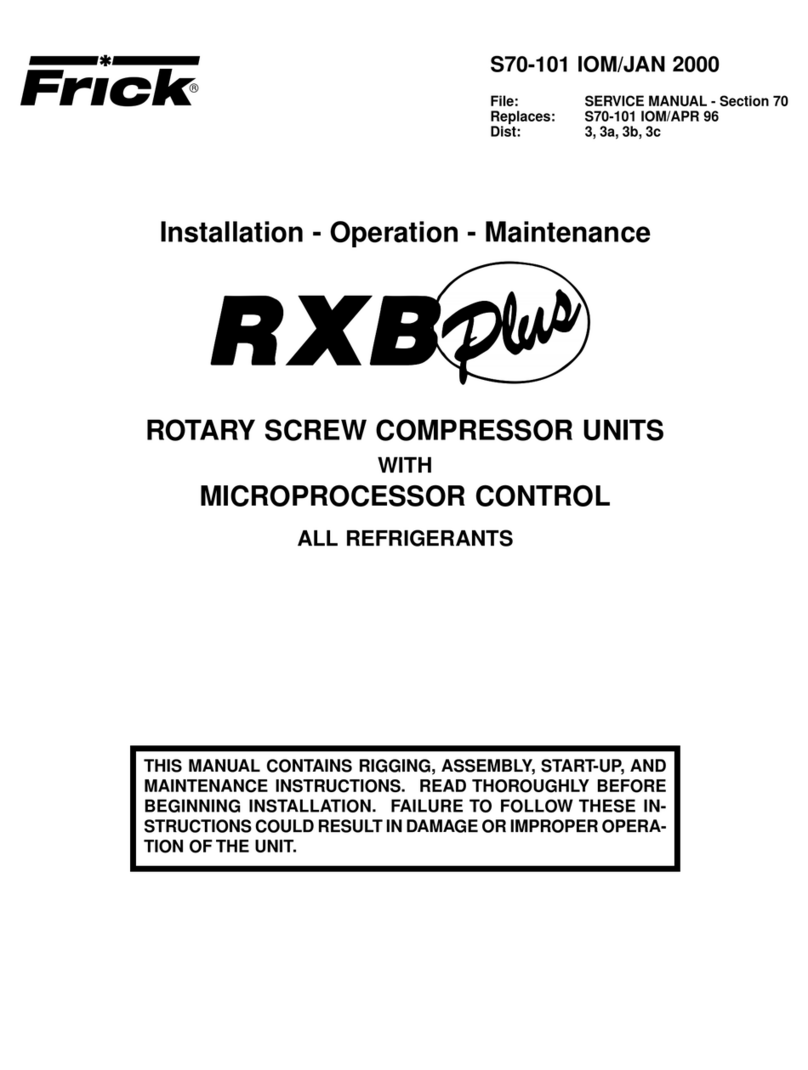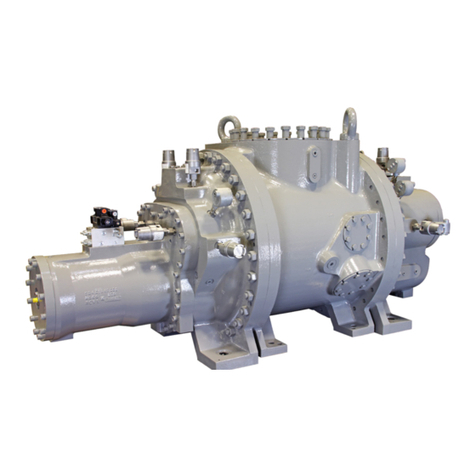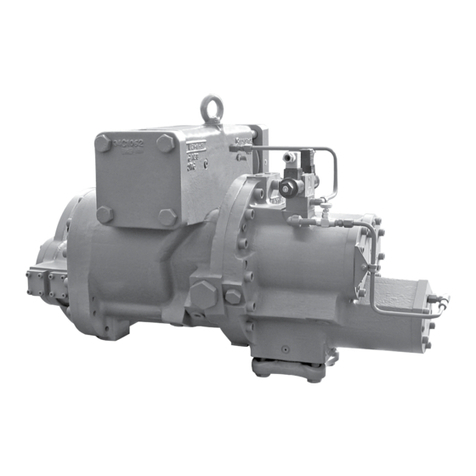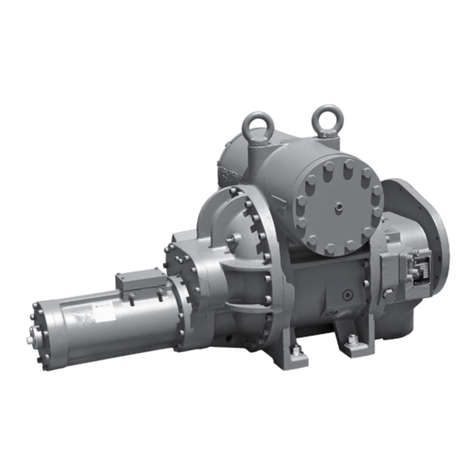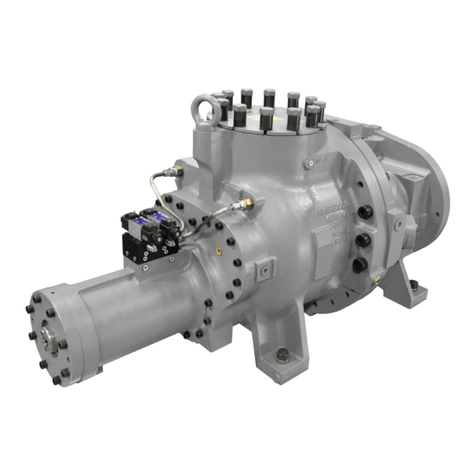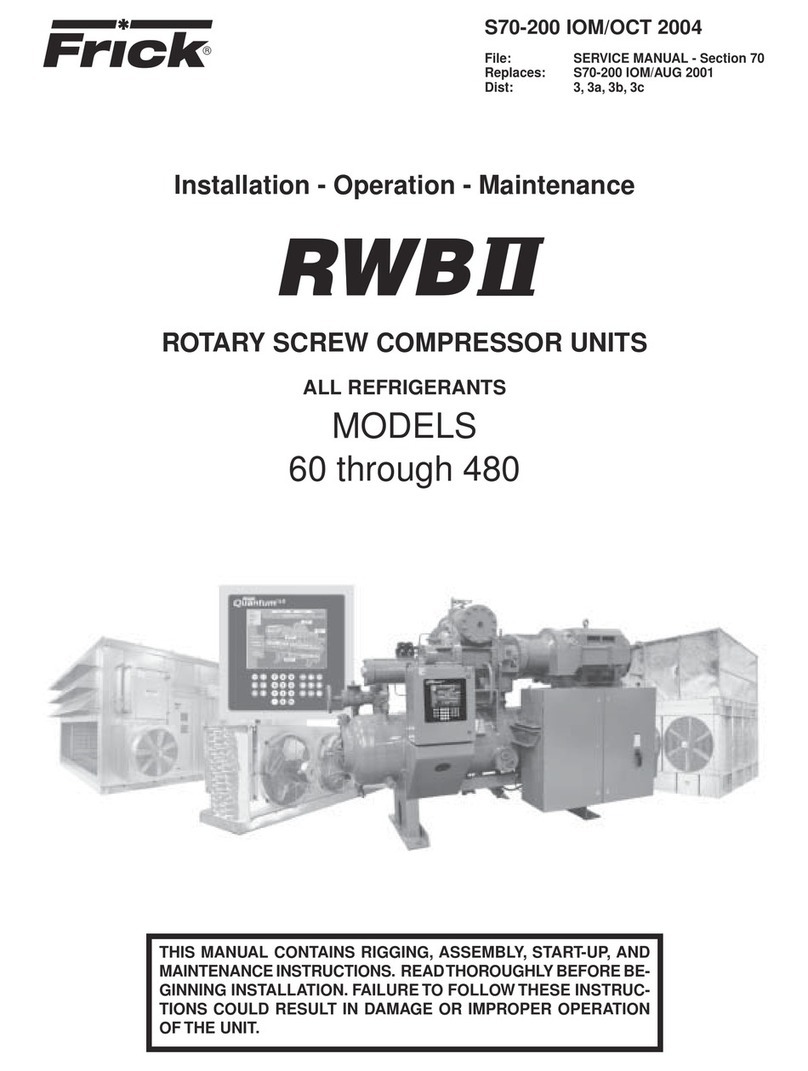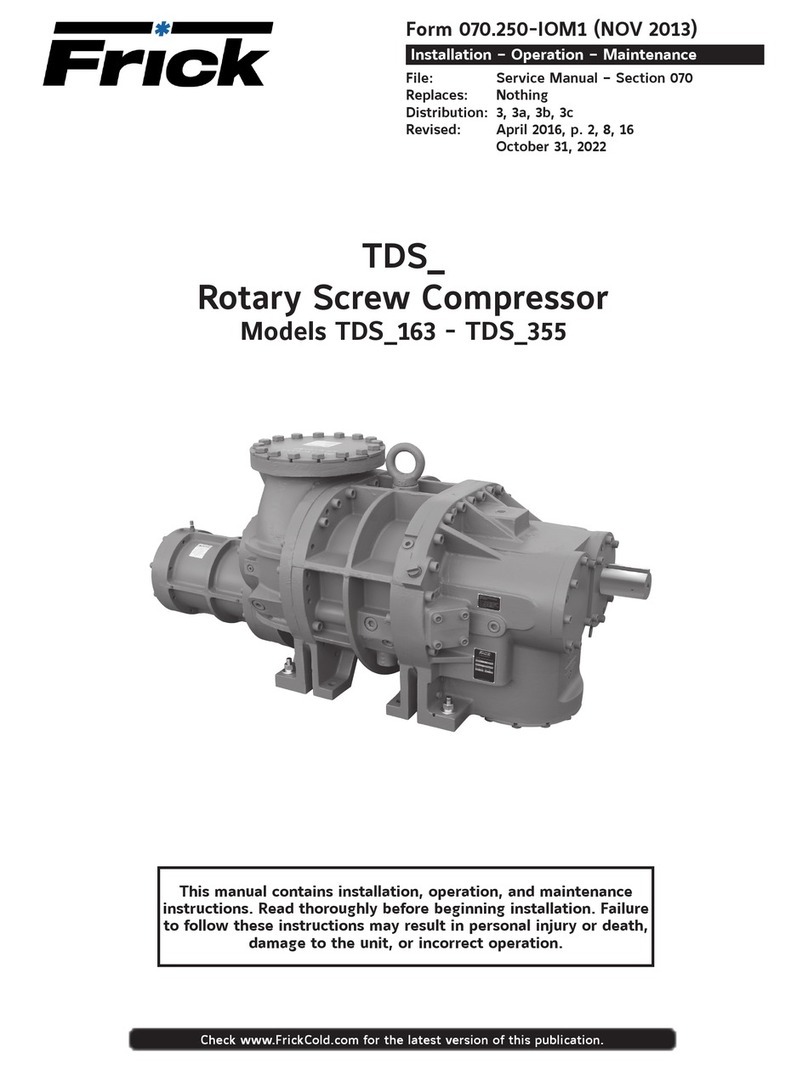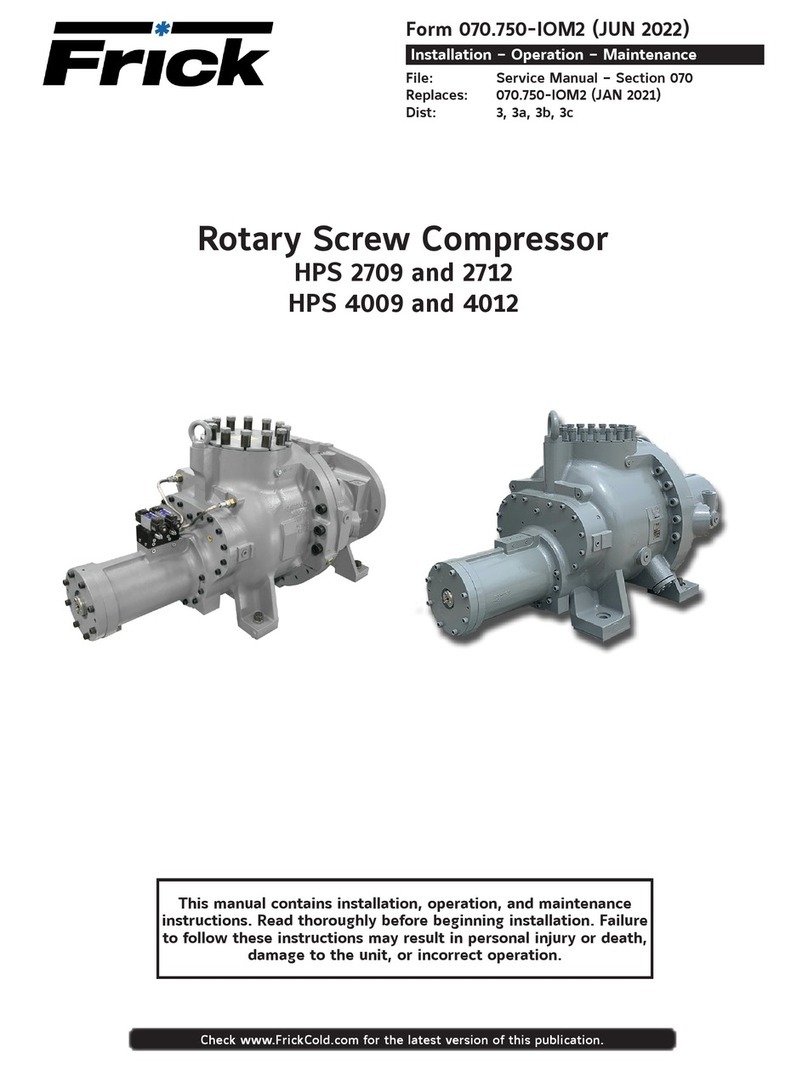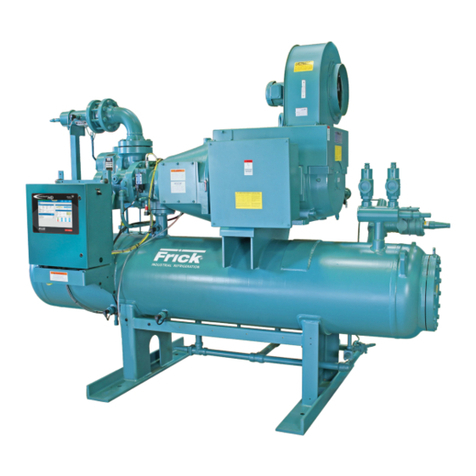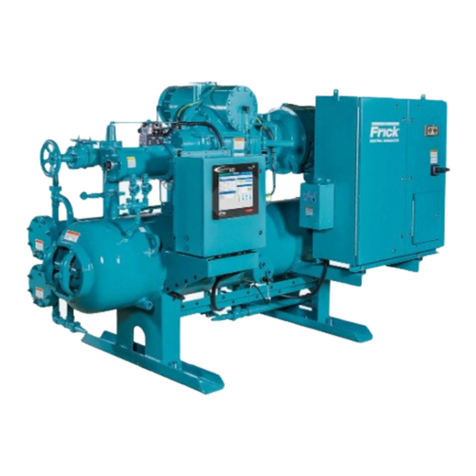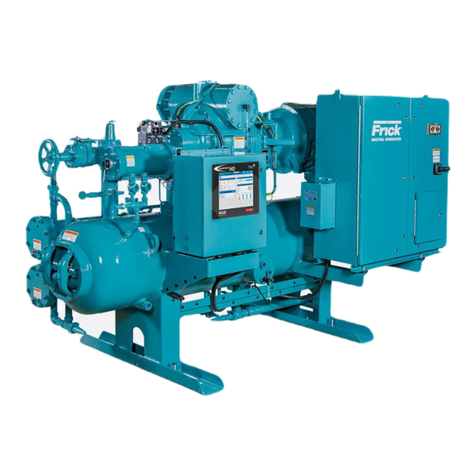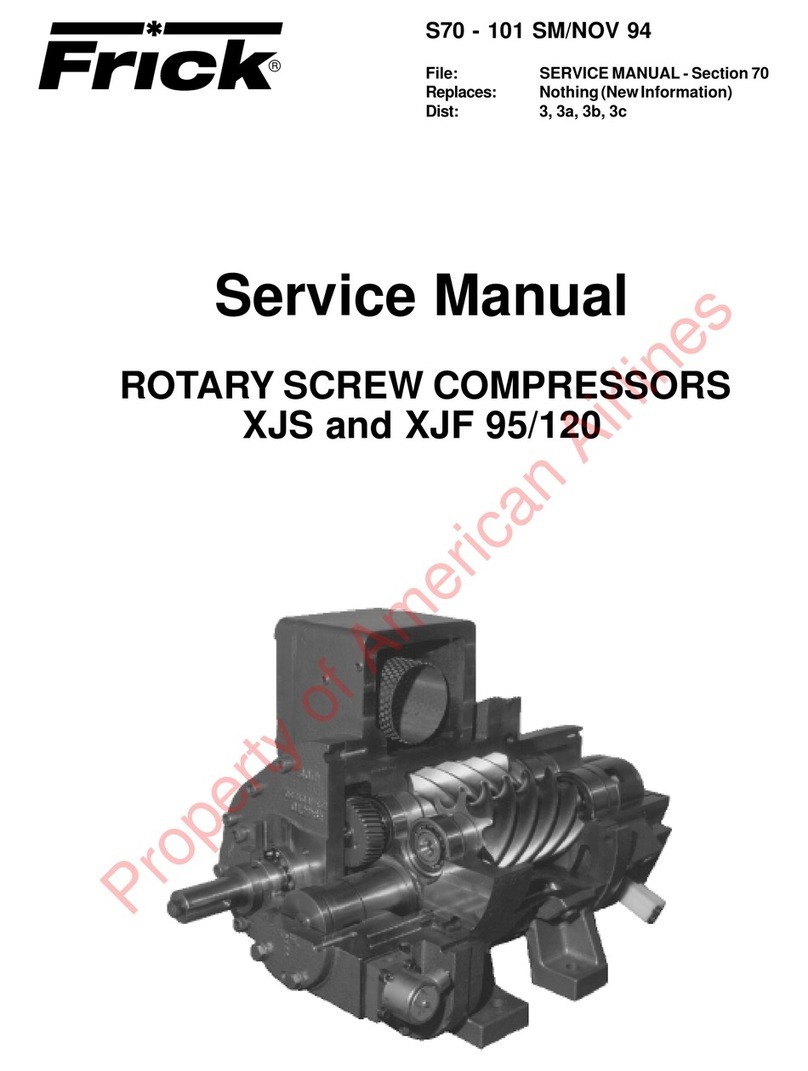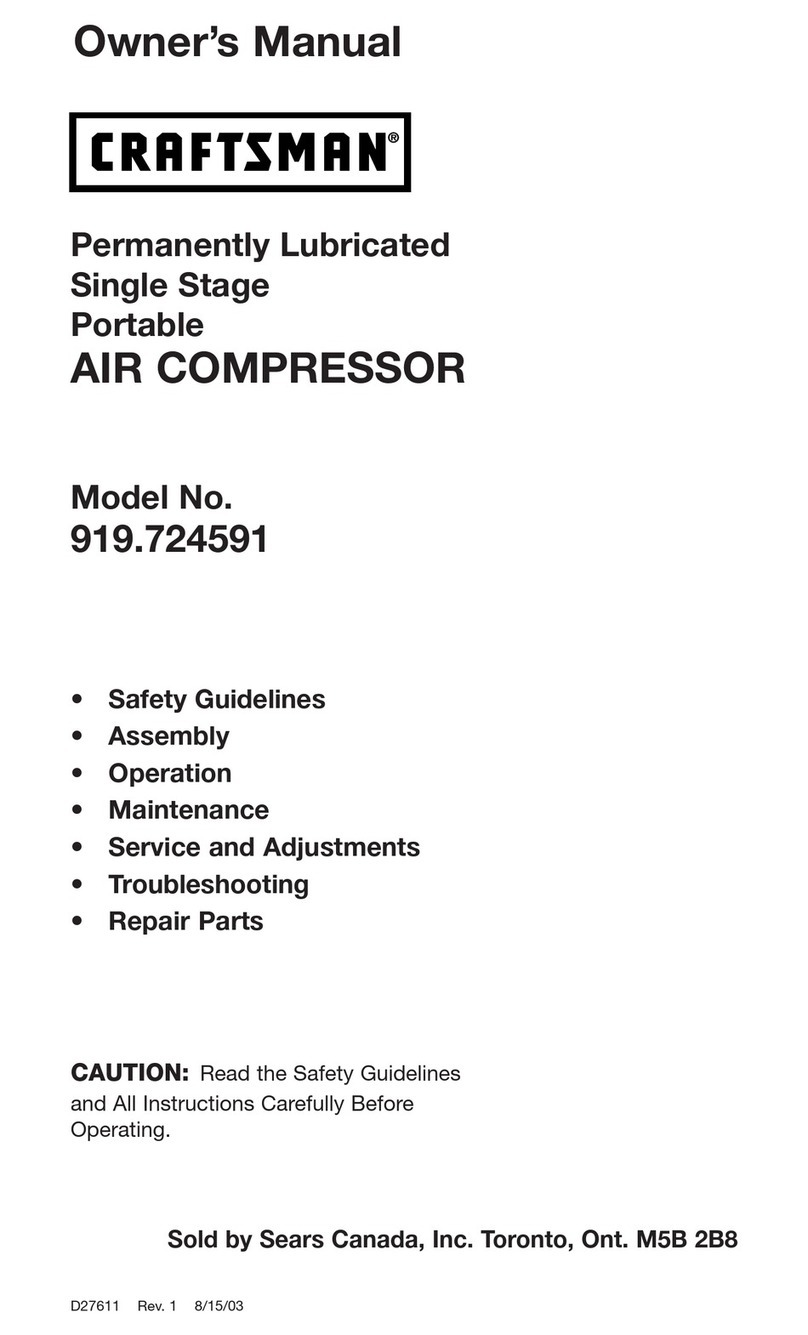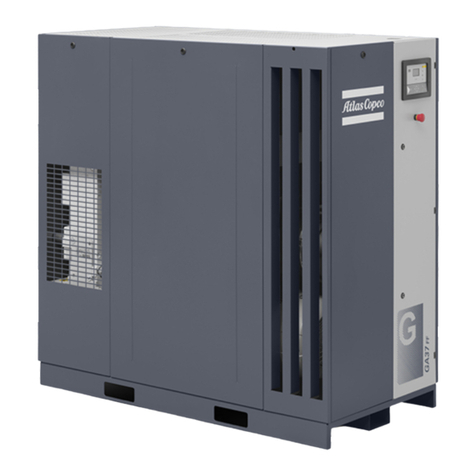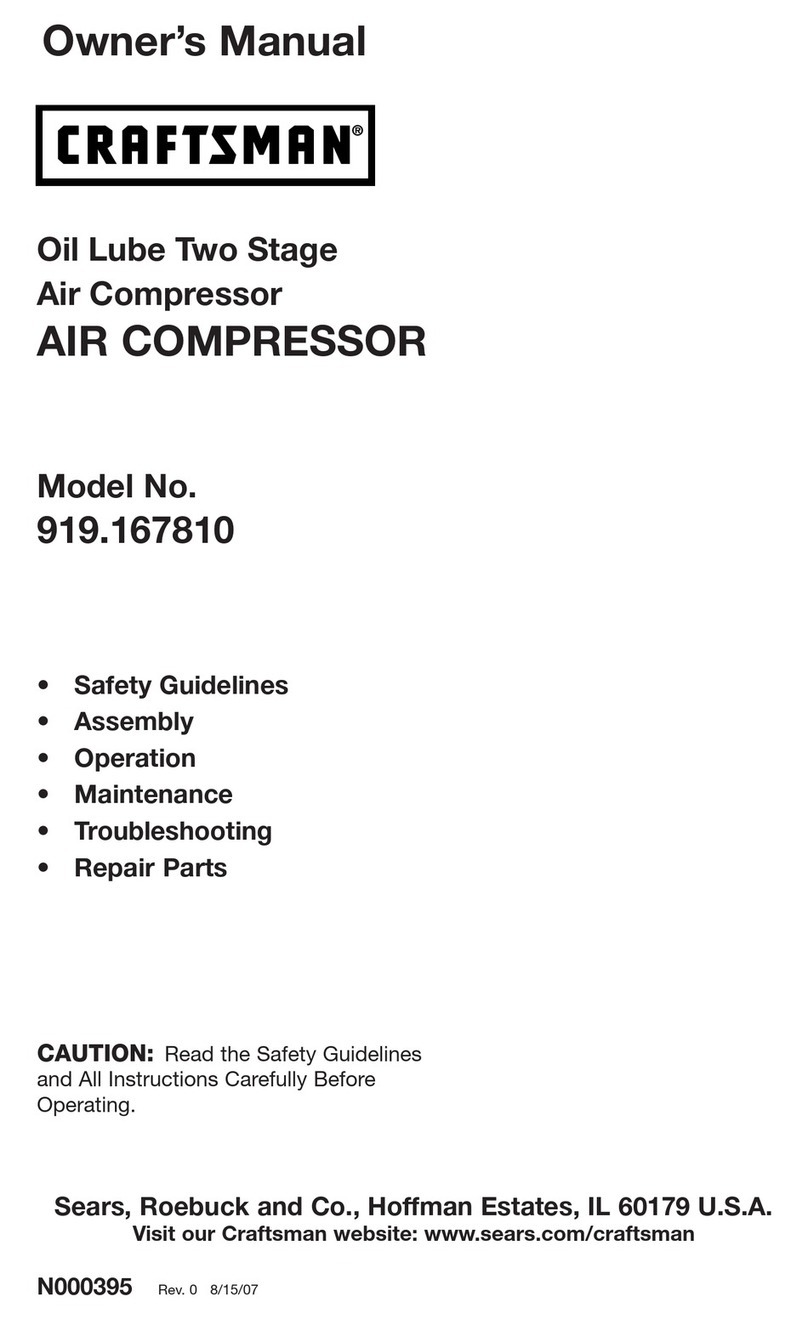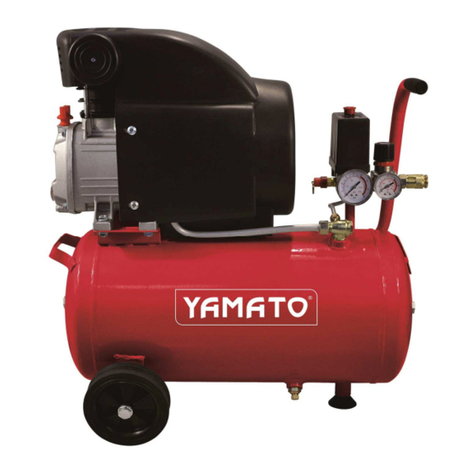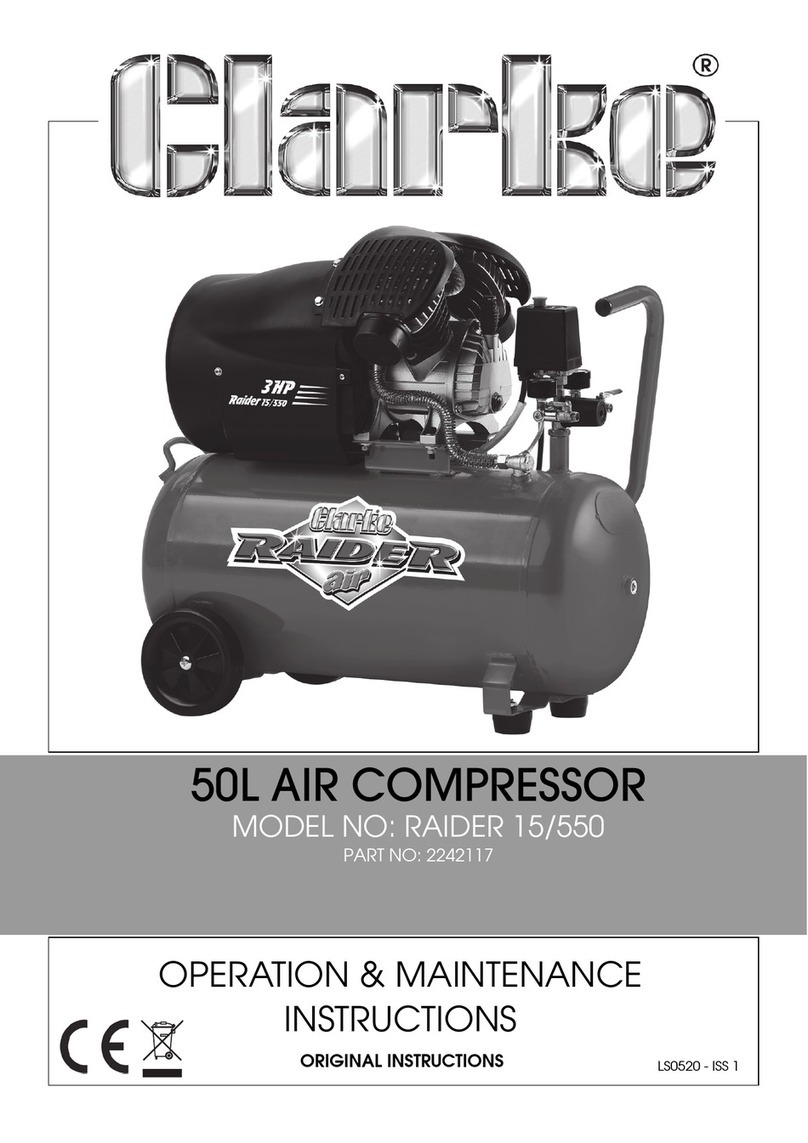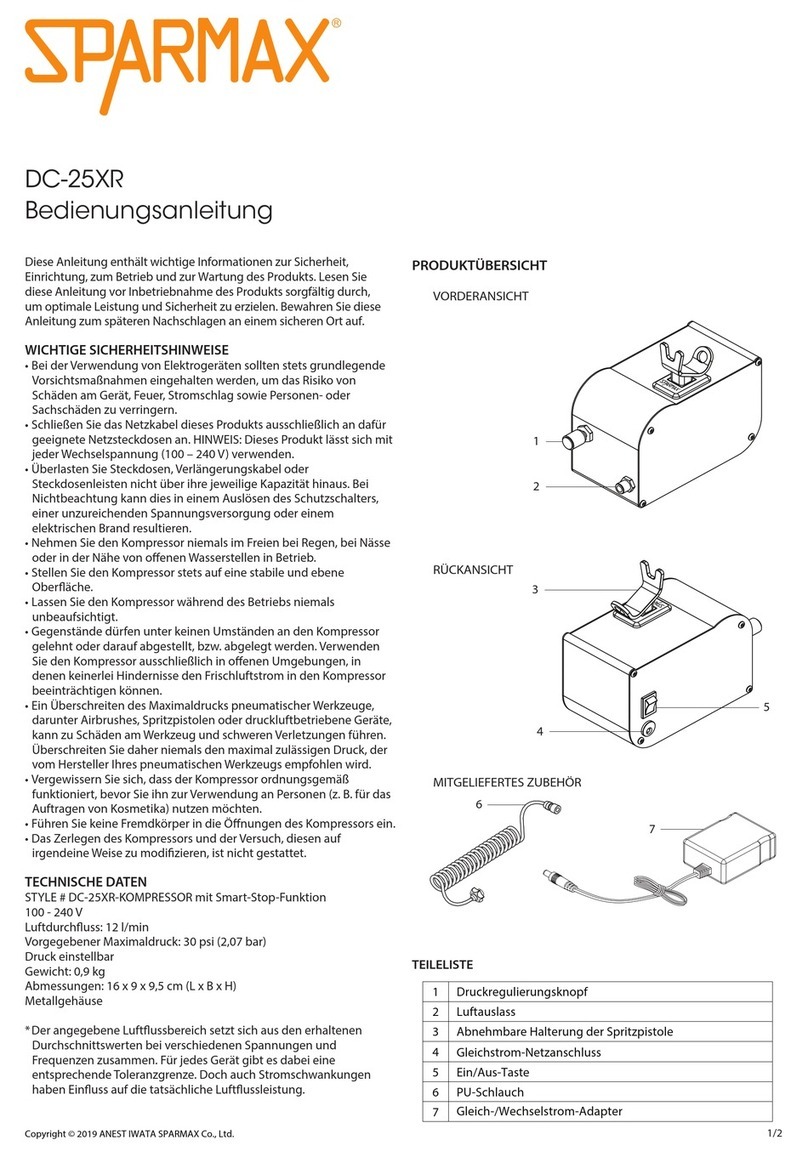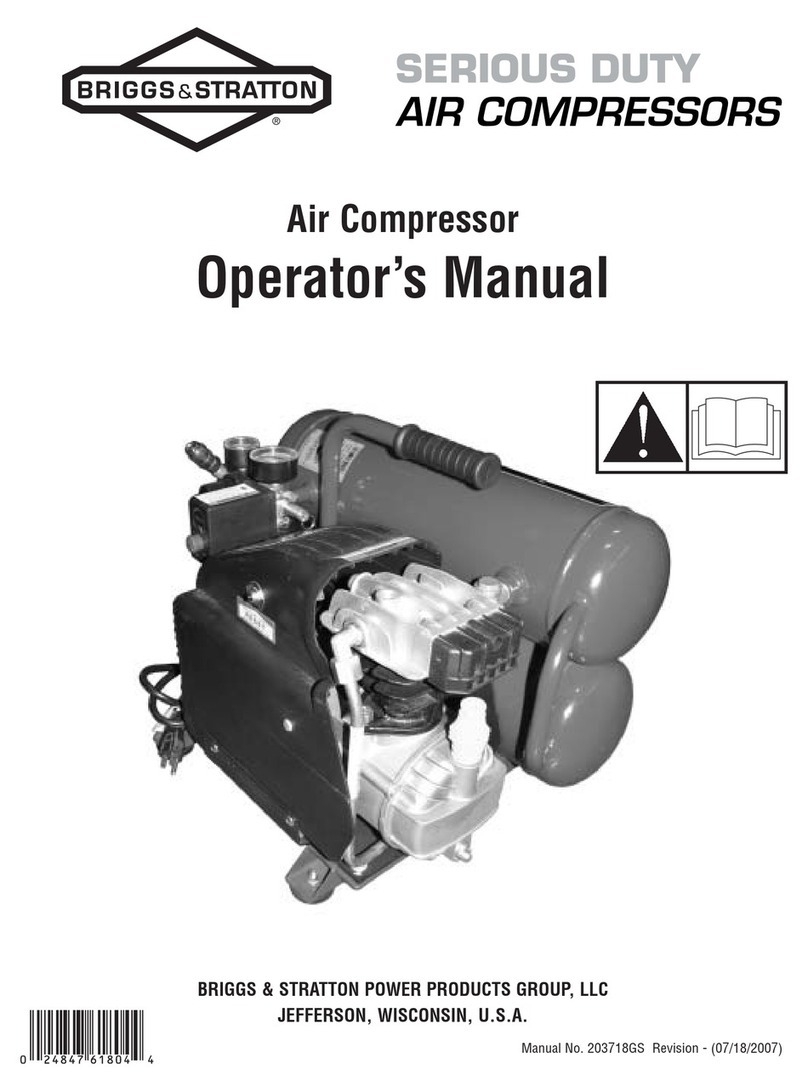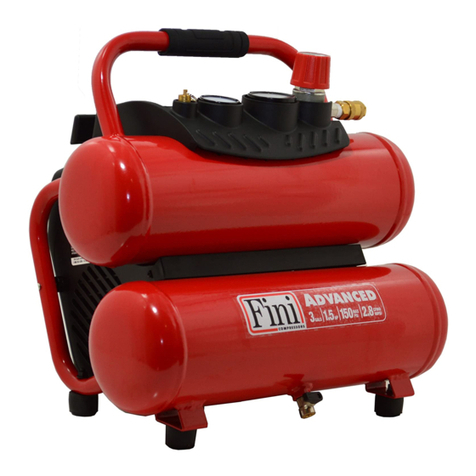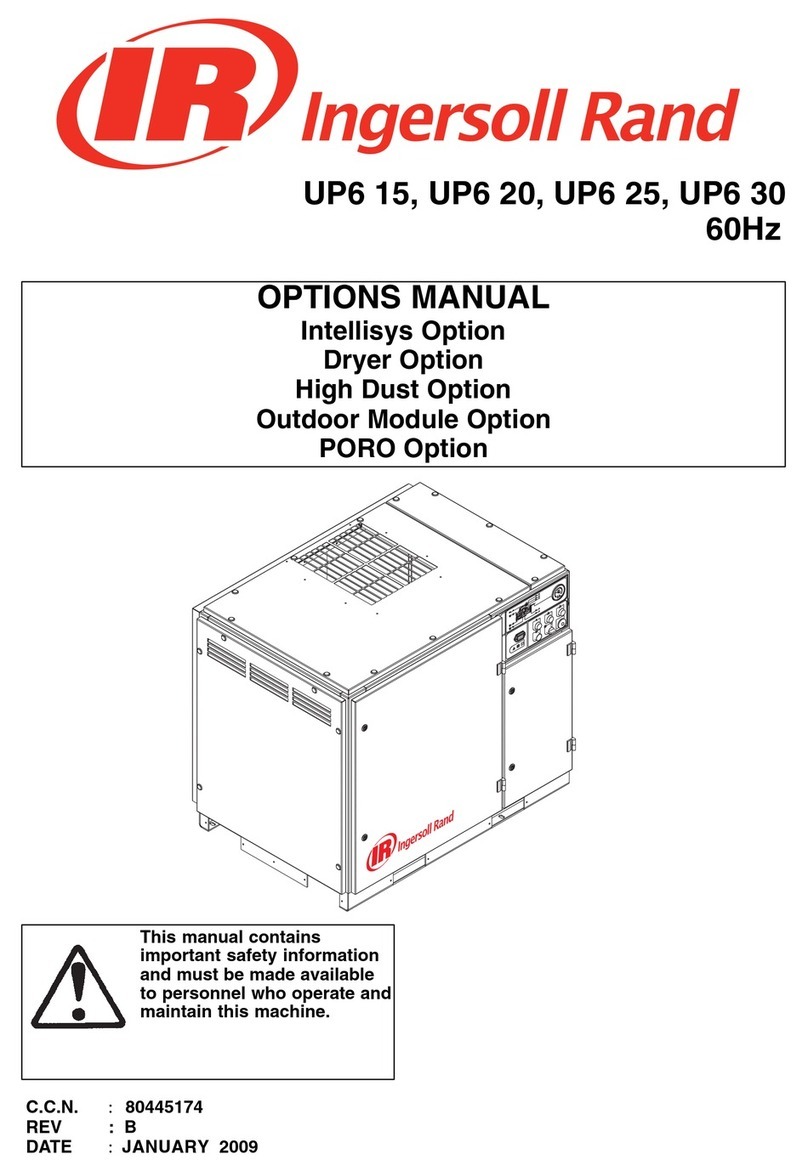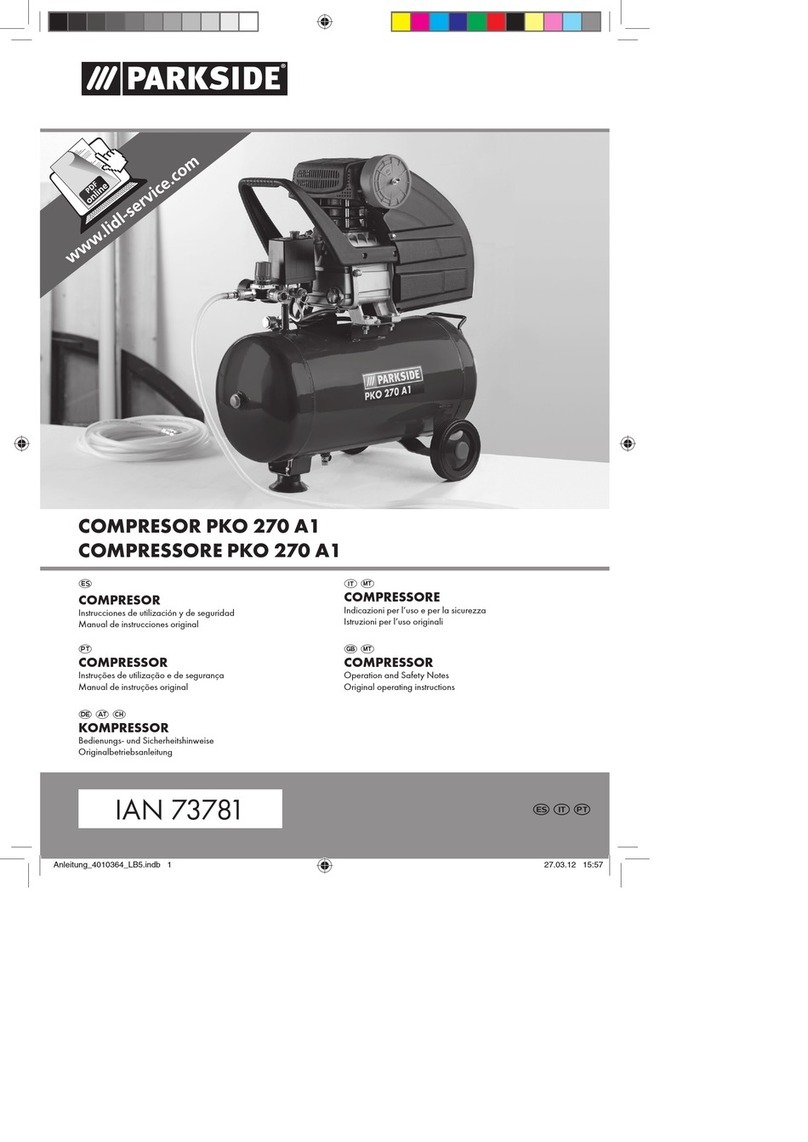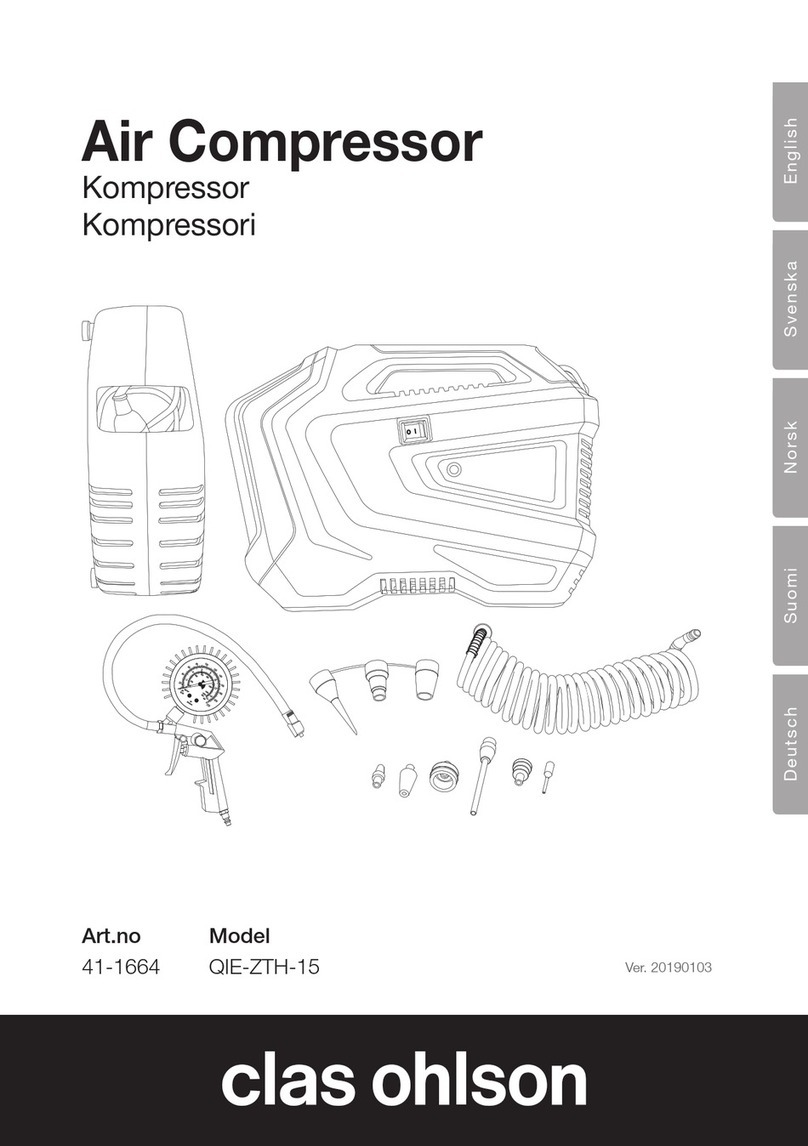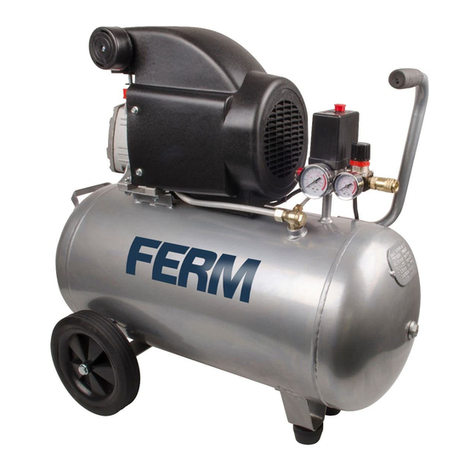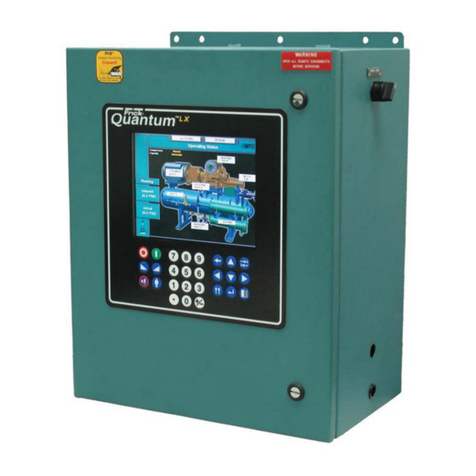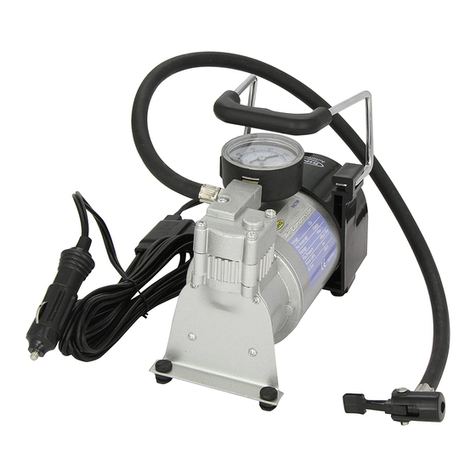
RWB II ROTARY SCREW COMPRESSOR UNITS
INSTALLATION
S70-200 IOM
Page 6
BP HUB FACE * DISC PACK CLAMPBOLT
SERIES SPACING BOLTTORQ. TORQ. DRY SIZE
SIZE in. mm ft-lb Nm ft-lb Nm UNF
BP48 4.88 124 40 54 41 56 3/8-24
BP53 5.88 150 60 81 65 88 7/16-20
BP58 6.00 152 120 163 100 136 1/2-20
BP58 6.69 170 120 163 100 136 1/2-20
BP63 7.00 179 120 163 100 136 1/2-20
* Max total indicator reading .003 in.or .076 mm for all sizes.
All rotating power transmission equipment is potentially dangerous. Ensure that the couplings are
properly guarded prior to turning on the power. Coupling guards are provided with the equipment
and must be in place and secured properly while the equipment is in operation.
SERIES 52 COUPLING DATATABLE
to the shafts by tightening setscrews.
4. Reinstall the eight previously removed bolts and locknuts.
Alternately tighten each locknut as you would the lug nuts
onanautomobile.NOTE:ALWAYSTURNTHE NUT.NEVER
TURNTHE BOLT.
5.Torque the locknuts to the value shown in the DBZ-B Data
Table for the size coupling being installed.
Lubricated and/or plated bolts and locknuts develop
higher bolt tension with less tightening than those that
are dry and not plated. Torques for
lubricated and/or plated bolts and lock-
nuts will generally fall in the lower
range; while those that are dry or as received from the fac-
tory fall into the upper range.Torque readings should be ob-
served while locknut is being turned.
6. Proceed to coupling alignment.
SERIES 52 COUPLING – TheThomas Series 52 coupling is
alsoused on applications above600HP.It has twodrivehubs,
a center spool, and disc packs which are bolted between the
center spool and each drive hub.A center spool and two flex-
ible steel disc packs serve as the drive element.These three
parts,situated betweenthe motor and compressorhubs,pre-
ventaxialend float betweenthe motor andcompressorshafts.
Endfloat tends to occur with sleevebearing motors.The mag-
neticcenter of the sleeve bearing motorsmustbe determined
and maintained by securing the coupling hub to the motor
shaft with the shaft properly located.
Injury may occur if loose clothing, etc. becomes en-
tangled on the spinning motor shaft.
Ifthemotoriscoupledtothe compres-
sor using a fixed-end-play coupling
such as the Series 52 coupling and
themotorisnot properlycentered,the additional thrust loads
will be transmitted to the compressor bearings. This addi-
tional thrust could result in premature bearing failure.Install
as follows:
1. Before proceeding with the alignment process found on
pages 7 and 8 of this manual, disassemble the Series 52
coupling noting the arrangement of bolts, washers, and
nuts as THEY MUST BE REPLACED IN THE SAME OR-
DER.Mark the adjoiningboltholesofeachpart,the twohubs,
the two disc packs, and the center spool, so they are put
back together in the same position.
2. Mount the coupling hubs on their respective shafts. The
hub is bored for an interference fit on the shaft. Heating of
the coupling hub may be necessary for assembly. DO NOT
SPOT HEAT THE HUB as it may cause distortion. Heat in
water, oil, or use a SOFT open flame and quickly position on
the shaft.
3. Adjust the distance between hub faces, as specified in the
Series 52 Coupling Data Table, by sliding the hubs. Key and
secure the hubs to the shafts by tightening the set screws.
4. Reassemblethe coupling with the discpacksandthe cen-
ter spool. Ensure that they are reassembled exactly as they
were disassembled.
WOODS BP SERIES COUPLING – isalso used on applica-
tions above 600 HP.It utilizes a center spool and two flexible
steeldiscpacksas the driveelement.Thesethreeparts,situ-
atedbetweenthe motor andcompressor hubs, prevent axial
end float between the motor and compressor shafts. End
float tends to occur with sleeve bearing motors.
Injury may occur if loose clothing, etc. becomes en-
tangled on the spinning motor shaft.
Ifthemotoriscoupledtothe compres-
sor using a fixed-end-play coupling
andthe motor is notproperlycentered,
theadditionalthrust loadswillbetransmittedtothe compres-
sor bearings.This additional thrust could result in premature
bearing failure. Install the BP Series coupling using the fol-
lowing instructions:
1. Before proceeding with the alignment process in the fol-
lowing section, disassemble the BP Series coupling noting
the arrangement of bolts, washers, and nuts as THEY
MUST BE REPLACED IN THE SAME ORDER. Mark the
adjoining bolt holes of each part, the two hubs, the two disc
packs, and the center spool, so they are put back together in
the same position.
2. Install the motor and compressor coupling hubs on their
respective shafts with the keys. Ensure that the hubs slide,
so that when the shim packs are installed, no axial stresses
are transferred to the shim packs because the coupling hub
is stuck.
3. Reassemblethe coupling with the discpacksandthe cen-
ter spool. Center the coupling between the shafts and en-
BP SERIES COUPLING DATATABLE
225 5 127.0 1/32 .914 .004 .102 .004 .102 7.5 10.5 1/4-20UNRF
262 5 127.0 1/32 .914 .004 .102 .004 .102 22 30.6 3/8-24UNRF
312 5-1/2 139.7 3/64 1.295 .004 .102 .004 .102 37 51.5 7/16-20 UNRF
350 6 152.4 3/64 1.295 .004 .102 .004 .102 55 76.5 1/2-20 UNRF
375 7 177.8 1/16 1.574 .004 .102 .004 .102 55 76.5 1/2-20 UNRF
425 7 177.8 1/16 1.574 .004 .102 .004 .102 96 133.6 5/8-18UNRF
450 8 203.2 1/16 1.574 .004 .102 .004 .102 96 133.6 5/8-18UNRF
500 9 228.6 5/64 2.083 .004 .102 .004 .102 250 348.0 7/8-14UNRF
COUP- HUB FACE MAXTOTAL INDICATOR READING CLAMP BOLT
LING SPACING +/- ANGULAR PARALLEL TORQUE (LUBE) SIZE
SIZE in. mm in. mm in. mm in. mm ft-lb Nm
